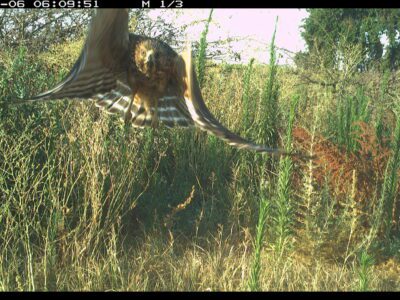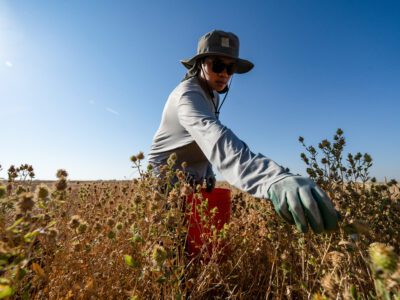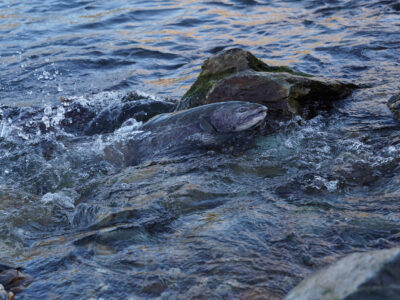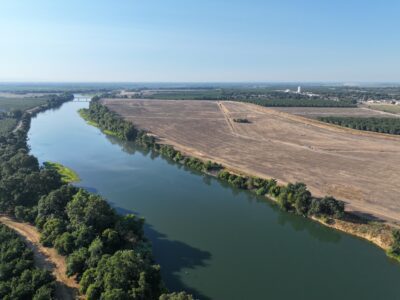Historically, millions of salmon would return from the Pacific Ocean to spawn in Central Valley rivers and streams. Now, experts are afraid of losing spring-run Chinook salmon in the wild entirely.
In October, the California Department of Fish and Wildlife (CDFW) and National Oceanic and Atmospheric Administration (NOAA) launched an emergency conservation hatchery program to safeguard the genetics of wild spring-run Chinook. Teams captured young salmon from Deer Creek, a tributary of the Sacramento River, and transported them to a UC Davis fish laboratory. This effort could directly support reintroduction if California loses these salmon in the wild.
The emergency measure was prompted by this year’s sharp decline in returning Central Valley spring-run Chinook in what biologists call a “cohort collapse.” On the three tributaries of the Sacramento River which support the last, best remaining habitat for wild spring-run Chinook—Mill, Deer, and Butte creeks—numbers of returning fish from the ocean plummeted precipitously after a decades-long decline.
This year, biologists counted 22 adult fish in Deer Creek and just seven in Mill Creek. Butte Creek saw the lowest returning population since 1991—95 fish were counted.
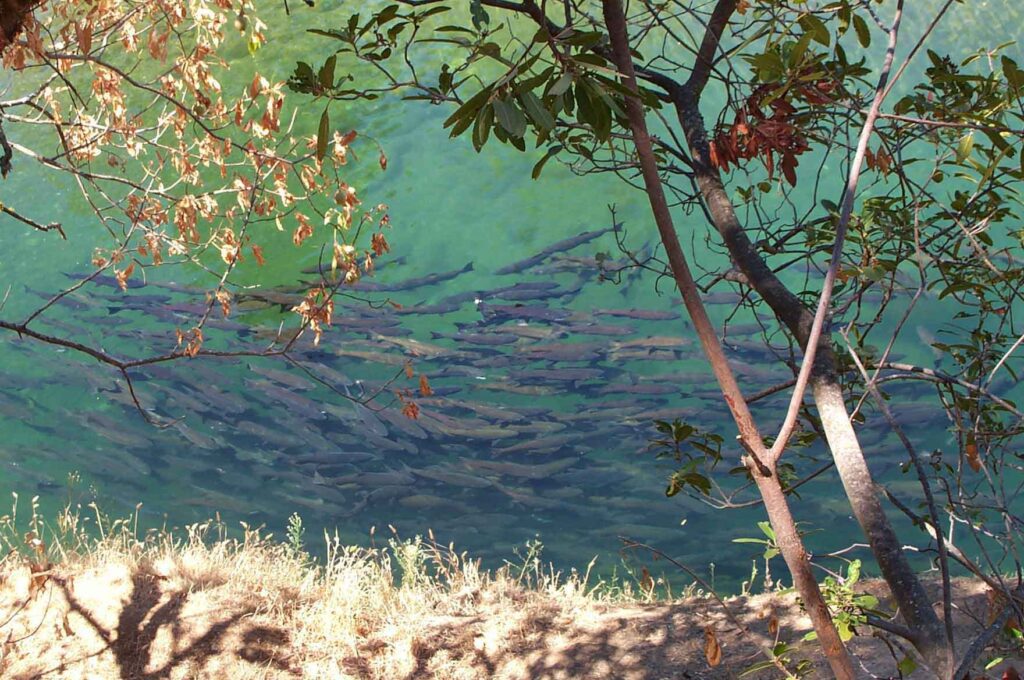
While CDFW’s emergency action to preserve salmon genetics is a necessary conservation strategy, it’s not a long-term solution. In fact, it emphasizes the troubling reality: Our collective efforts to reverse Chinook extinction are falling short. Salmon recovery in the Central Valley needs an expedited and larger-scale investment to restore access to vital habitat to reverse their trend toward extinction.

River Partners and our network of conservation partners work across Central Valley watersheds to restore Chinook populations at a pace and scale that matters. The thousands of acres of riverways we’ve restored and reconnected and the thousands we hope to revitalize this decade are key to a holistic, truly sustainable recovery approach for struggling fish and a myriad of other imperiled wildlife.
We spoke with River Partners Restoration Ecologist Mike Davis to learn more about Chinook salmon and why, despite the dire situation, all hope is not lost.
Q: What are the primary factors contributing to the decline of spring-run Chinook salmon?
Mike Davis: Spring-run Chinook salmon, who migrate upstream from the ocean from late March through September, are particularly vulnerable to climate change and warming water temperatures because they are blocked from accessing their historic, high-elevation spawning areas by dams. Recent research shows that a particular survival strategy used by some juvenile spring-run Chinook where they migrate later than other salmon is often critical to cohort success. Yet, this strategy is increasingly under threat as thermally viable habitat for these late migrants is forecasted to shrink dramatically with climate change. On top of that, persistent drought also affects the quality of habitat available to young Chinook salmon as they make their way to the ocean. Essentially drought, heatwaves, decreased flows, and rapid warming challenge the survival of spring-run Chinook at every phase of their lives. If they’re going to survive, they need restored habitat and cold-water flows.
Q: How is River Partners aiding salmon recovery?
Davis: We’re working to hold the door open, so to speak, and give these resilient fish the connected riverscapes they need to thrive. That means restoring and reconnecting floodplains and river channels to make the habitat more suitable for salmon to carry out their basic life behaviors. When we restore and reconnect rivers, we also have the opportunity to leave more water in the rivers —so there’s more flow for fish.
We’re also working at such a large scale—across more watersheds where Chinook salmon are than any other organization. In the past 25 years, we’ve restored over 18,000 riverside acres along 212 miles of rivers. We apply an holistic approach to river restoration: working with farming communities to identify properties to bring them into conservation ownership, permitting, planning, design, and then implementation of riparian plantings, floodplain reconnection, and in-stream waterway improvements. We live and breathe river restoration every day.
We’ve reconnected floodplains such as at the 175-acre Willow Bend Preserve along the Sacramento River near the farming town of Colusa, where we turned a walnut orchard into rich salmon habitat. This is a model we are using to reconnect historic floodplains back to the river across the Central Valley.
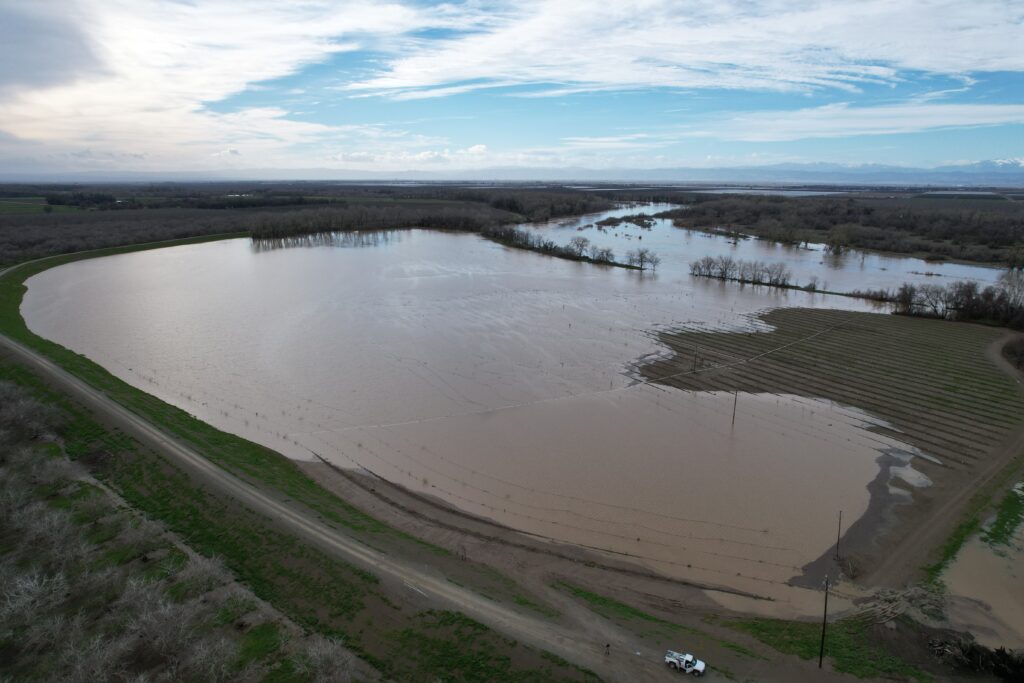
River Partners restored habitat for salmon and watched in awe as they immediately moved in. That’s how we know we’re doing something right. We’ve got a massive coalition of partners and supporters who are helping us grow our restoration footprint along critical reaches of the Sacramento and San Joaquin rivers. Yet we need a more comprehensive recovery effort for everybody working in the Central Valley. No matter who you are, everyone agrees we need to be doing more.
Q: Why are individual runs of Chinook salmon important to salmon as a whole?
Davis: Individual runs of Chinook salmon—like spring, winter, fall, and late-fall runs—are genetically distinct and collectively contribute to making Chinook salmon as a whole more resilient. Some have proposed thinking about different runs of salmon as you would different investments in a financial portfolio. It makes sense to diversify all the ways you’re trying to make money so if one falters, it doesn’t jeopardize the whole portfolio . Extending the metaphor to include all the various tributaries and watersheds of the Central Valley in which River Partners works helps to underscore the value of our approach to salmon and wildlife recovery.
The process of evolution has created many different ways to survive if you’re a Chinook salmon, all of which are critical amidst human disruptions and climate change. Going forward they’re going to need all the diversity in survival strategies to endure, whether it’s varied migration timing from the ocean to the Central Valley or where they choose to migrate, spawn, and grow into fish capable of surviving the ocean. This variability insulates Chinook salmon as a whole from natural events like floods and droughts, or human interventions that have altered hydrology or access to critical habitat areas.
Over the last century or more, we’ve seen a steady erosion of all the different facets of the Central Valley landscape to which all the various survival strategies are adapted, putting salmon in the precarious position they’re in today.
Q: What does this year’s cohort collapse and the emergency action taken by CDFW indicate about our progress to reverse extinction trends and recover wild Chinook salmon?
Davis: The fact that we’re having to go out into the wild and capture fish to create a conservation hatchery program makes it clear we need to do more. The pace and scale of investment into reversing extinction trends we’ve collectively put forth is not enough. We must redouble our efforts and expand habitat restoration for spring-run Chinook in the Central Valley if they’re going to survive climate change. There’s no time to waste.
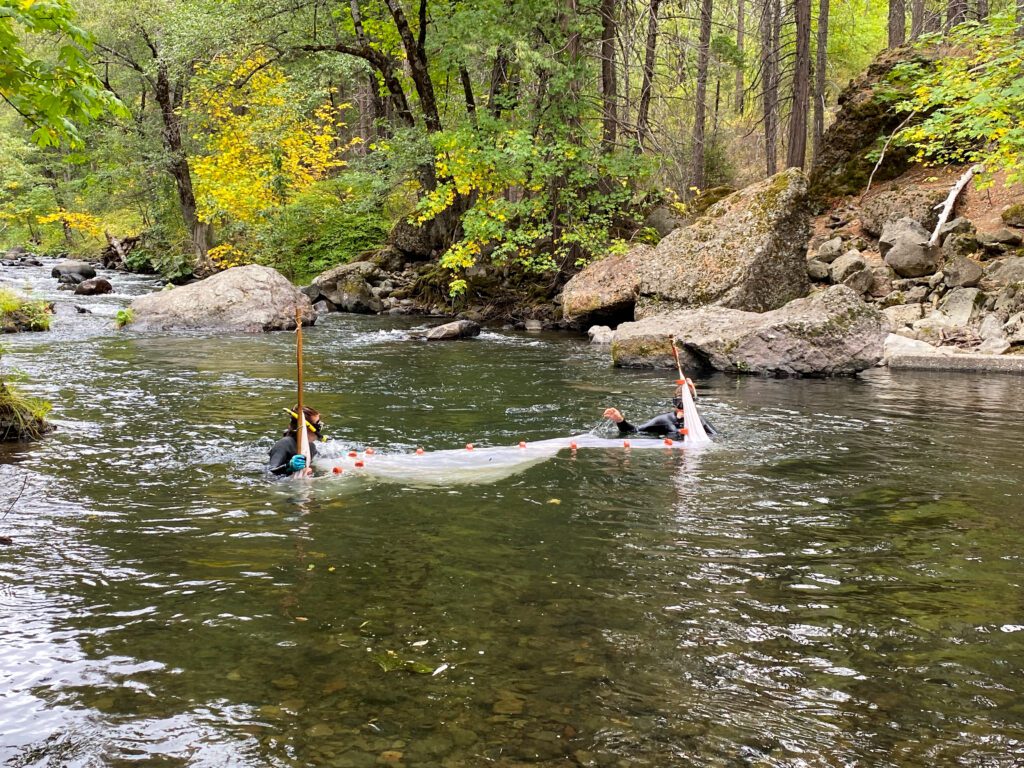
Q: Some streams are reporting record-breaking salmon returns this year. Can you explain?
Davis: Swarms of fish swimming in rivers are not all the same. Wild spring-run salmon populations collapsed this year after a decades-long decline. Hatchery salmon fish can mask the decline of wild salmon populations if you’re not differentiating between the two. So, while we’ve seen a record-breaking 23,000 hatchery fish return to the Mokelumne River which runs between Sacramento and Stockton, the situation for wild Central Valley spring-run Chinook salmon remains dire.
Q: Why are you motivated to work to save native fish, personally?
Davis: I got my start as a fisheries biologist in the California desert, in Bishop working for CDFW to recover extremely rare native desert fishes of the Owens River Valley and Mojave Desert. These are fish species that are even less abundant than some of our salmon runs and whose grip on existence is even more tenuous (i.e., dependent on flow from a single groundwater spring).
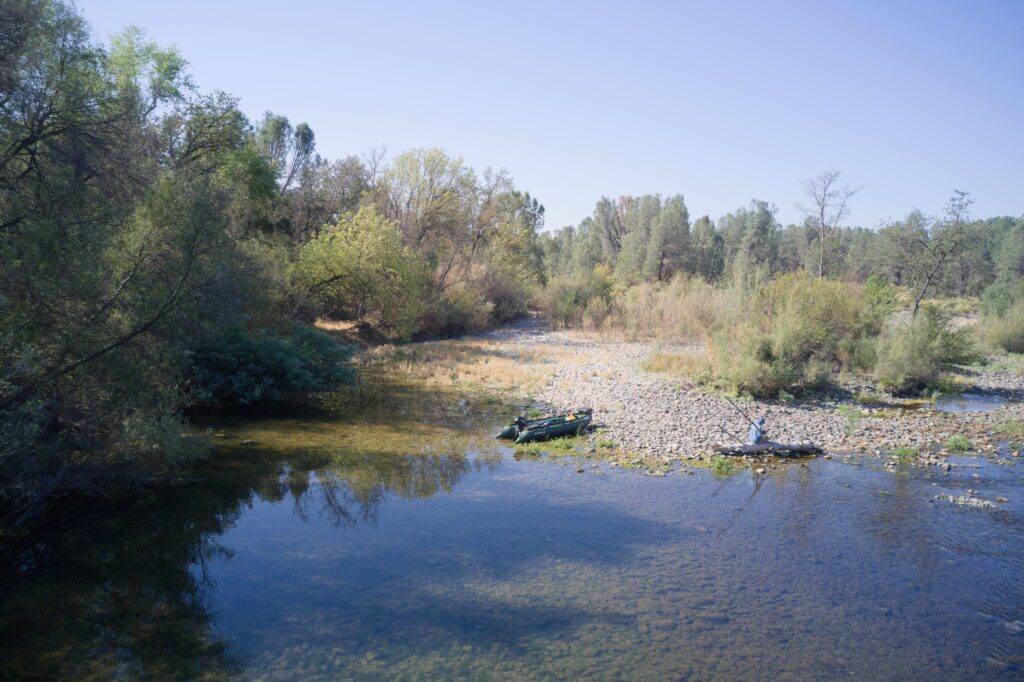
The odds of a full recovery may be low but as long as these imperiled fishes exist there’s the promise that we can keep the door open for a potential recovery. And in the case of Central Valley salmon it’s potentially a big recovery if we restore habitat at the scale we know we can. I share the perspective of one of my conservation mentors, that if we let them go extinct we should all find unacceptable the lost potential, the loss of something that will never be again. I’ve dedicated my career to making sure the possibility of recovery stays a reality. To holding the door open for the possibility that they’ll someday not require emergency interventions, that they’re restored to their former role within indigenous cultures of California, and that my kids can say something like “there was a time a long time ago when there weren’t so many salmon.”
Q: How can people support salmon and River Partners?
Davis: As River Partners continues to scale, private donations allow us to cover important aspects of our work that aren’t reimbursed by government grants. The private support we receive is vital to continue restoring habitat for Chinook salmon recovery. Donate to help us double our pace and scale of critical riverway restoration in the Central Valley and beyond to create thriving habitats and futures for species like Chinook salmon.
Banner photo credit: CDFW

